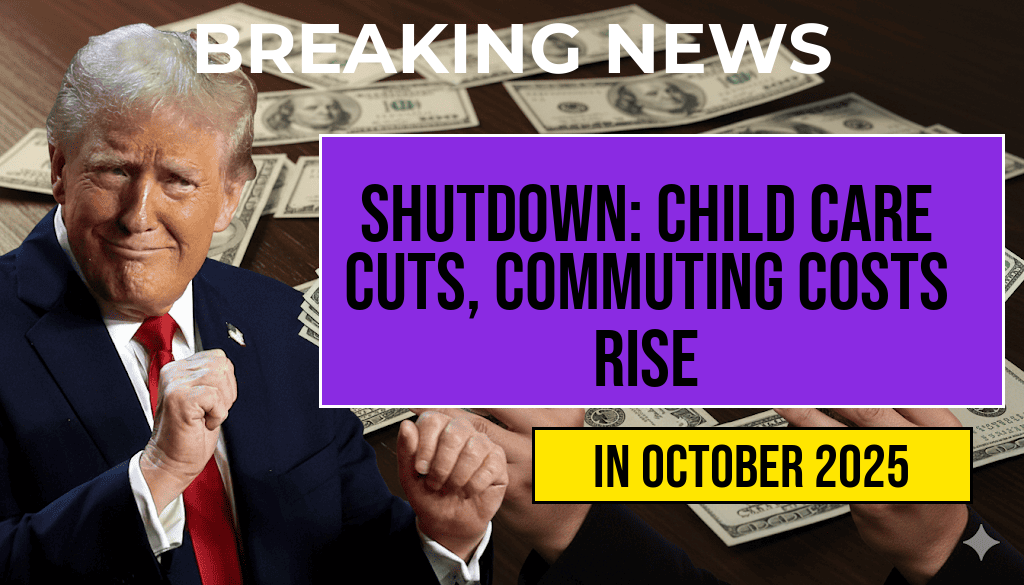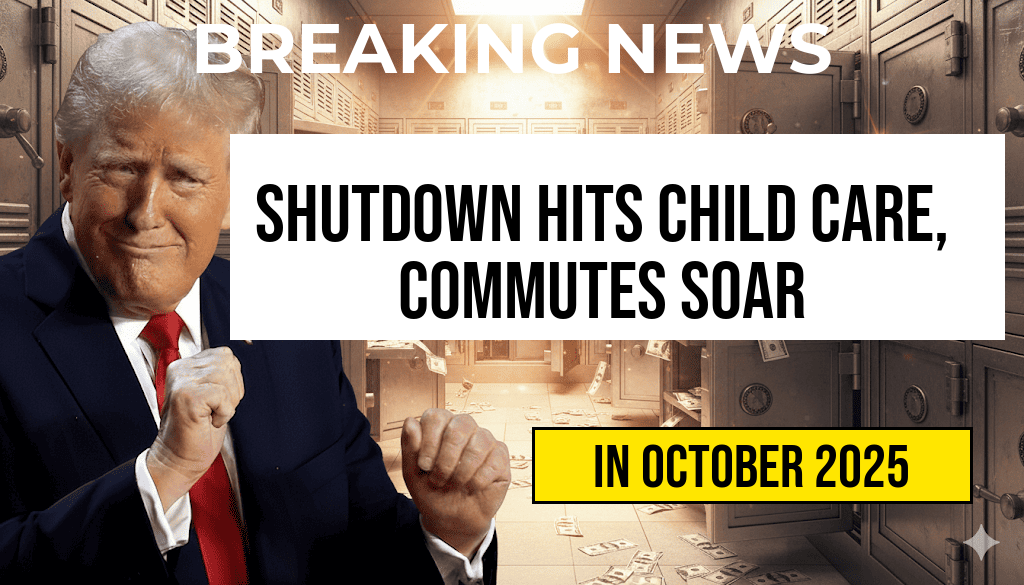The ongoing government shutdown is having a profound impact on daily life in the Washington, D.C. region, particularly in the realms of child care and commuting costs. As federal offices remain closed, thousands of child-care slots are disappearing, leaving many families scrambling for alternative solutions. Meanwhile, commuters are feeling the pinch as transportation costs surge amid the uncertainty. This situation underscores the cascading effects of a government shutdown, affecting not only federal workers but also the broader community that relies on various services and infrastructure. As the shutdown continues, local economies are bracing for more challenges, particularly in sectors that serve the workforce and families in the area.
Child-Care Slots Disappear as Funding Runs Dry
The shutdown has led to significant disruptions in child-care services across the D.C. region. Many federally funded programs and facilities are facing financial strain, resulting in a reduction of available slots. According to reports, over 30% of licensed child-care providers in the area are experiencing operational difficulties due to the lack of federal funding. This decrease in capacity is forcing parents to seek alternative arrangements, often at higher costs or through less reliable providers.
- Increased waitlists for available slots.
- Higher costs for private child care, with some facilities raising fees.
- Increased reliance on unlicensed home care options.
Local parents are expressing their concerns as they struggle to balance work commitments with the challenges of finding affordable child care. Many are turning to co-ops or informal arrangements with friends and family, but these solutions are not sustainable for all. The Child Care Aware of America organization has noted that the shutdown could lead to long-term impacts on child development and family stability if the situation does not resolve soon.
Commuting Costs Surge Amid Shutdown Pressures
As the government shutdown drags on, commuting costs in the D.C. region are rising. Public transportation agencies, such as Metro, are facing budget shortfalls due to decreased ridership and federal support. Commuters are now paying more for their daily travel, with reports indicating a surge in fares for both bus and rail services.
| Transportation Method | Average Cost Pre-Shutdown | Average Cost Post-Shutdown |
|---|---|---|
| Metro Rail | $2.50 | $3.00 |
| Metro Bus | $1.75 | $2.25 |
| Ride-sharing (Uber/Lyft) | $15.00 | $20.00 |
This increase is especially burdensome for lower-income families, who are already feeling the effects of inflation and rising living costs. Commuters are now facing a double whammy—higher transportation fees coupled with potential job instability as the shutdown continues. Many are considering alternate routes or modes of transport, but there are limited options available.
Community Response and Outlook
Community organizations and local governments are stepping in to address the challenges posed by the shutdown. Various initiatives are being launched to provide support to affected families, including emergency child-care grants and subsidized transportation programs. Local leaders are advocating for a swift resolution to the shutdown, emphasizing the need for collaboration and compromise.
- Community forums are being held to address child-care issues.
- Local non-profits are offering financial assistance for transportation costs.
- Advocacy groups are pushing for legislative action to restore funding.
As the potential for resolution remains uncertain, the D.C. region continues to feel the strain of the ongoing shutdown. Families are left to navigate a landscape of vanishing child-care slots and escalating commuting costs, highlighting the critical need for effective government action and support.
Frequently Asked Questions
What is the impact of the government shutdown on child-care slots in the DC region?
The government shutdown has led to a significant reduction in available child-care slots, affecting many families who rely on these services for their children during work hours.
How has commuting affected residents in the DC area during the shutdown?
Residents are experiencing increased commuting costs due to various factors, including limited public transportation options and rising gas prices, leading to financial strain on many workers.
Are there any specific groups that are disproportionately affected by the shutdown?
Yes, parents and low-income families are particularly vulnerable, facing challenges related to the loss of child-care services and increased commuting costs, which can exacerbate existing financial difficulties.
What long-term effects could the shutdown have on child-care services?
The shutdown may lead to long-term challenges for child-care providers, including potential closures and a decrease in available spots, which could impact families for months to come.
What can affected families do to mitigate the impact of the shutdown?
Affected families can explore alternative child-care options, seek community resources, or contact local government officials for assistance regarding commuting costs and available support services during the shutdown.








